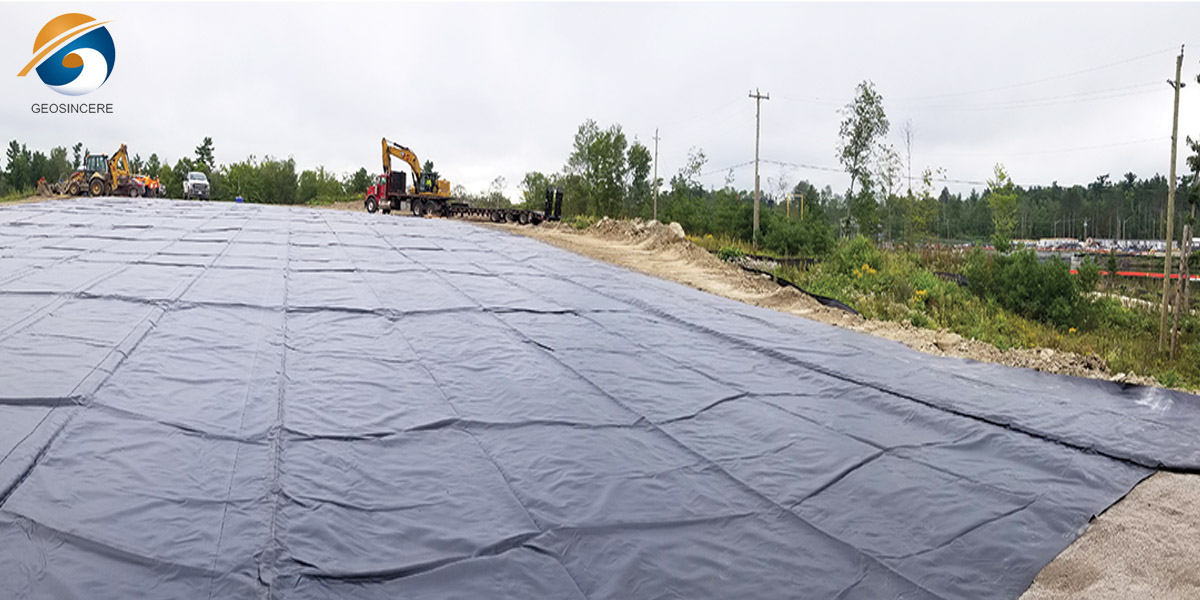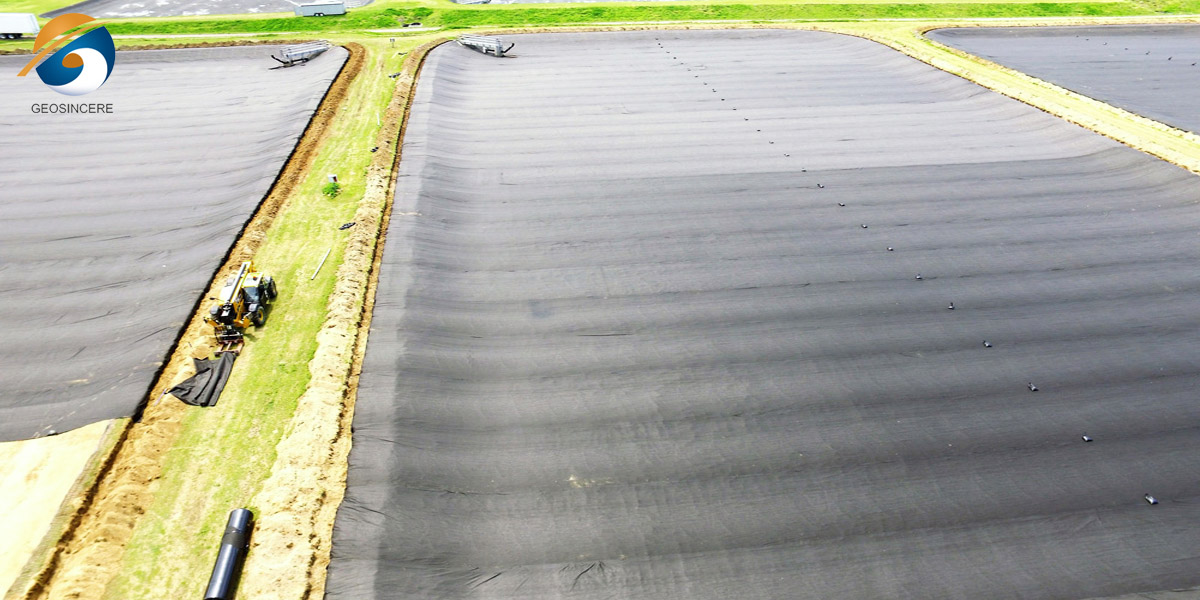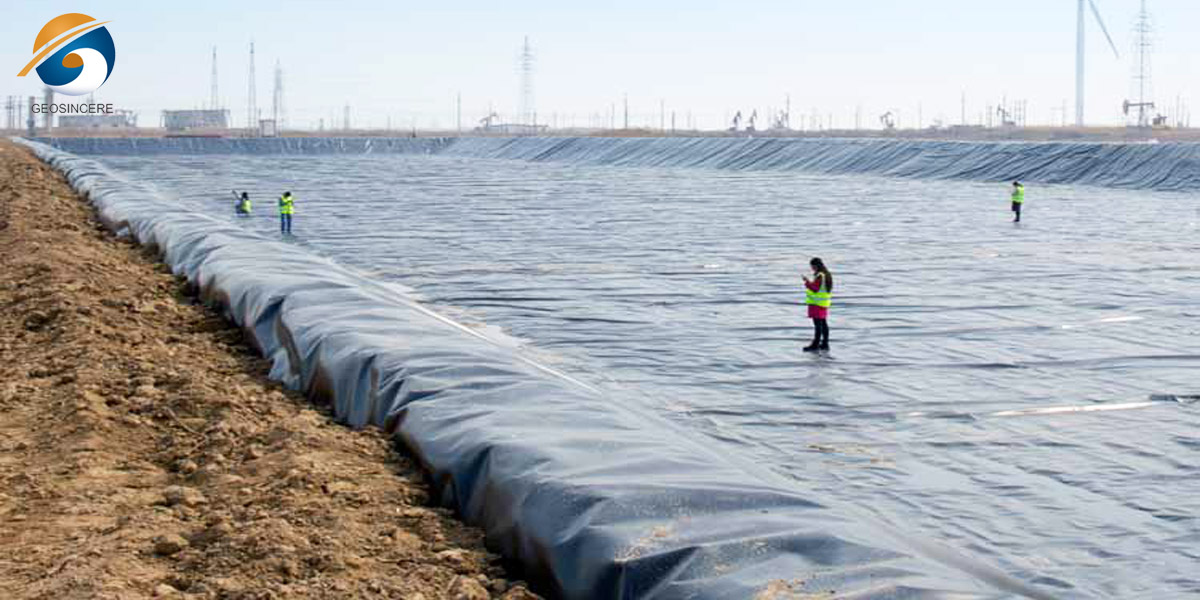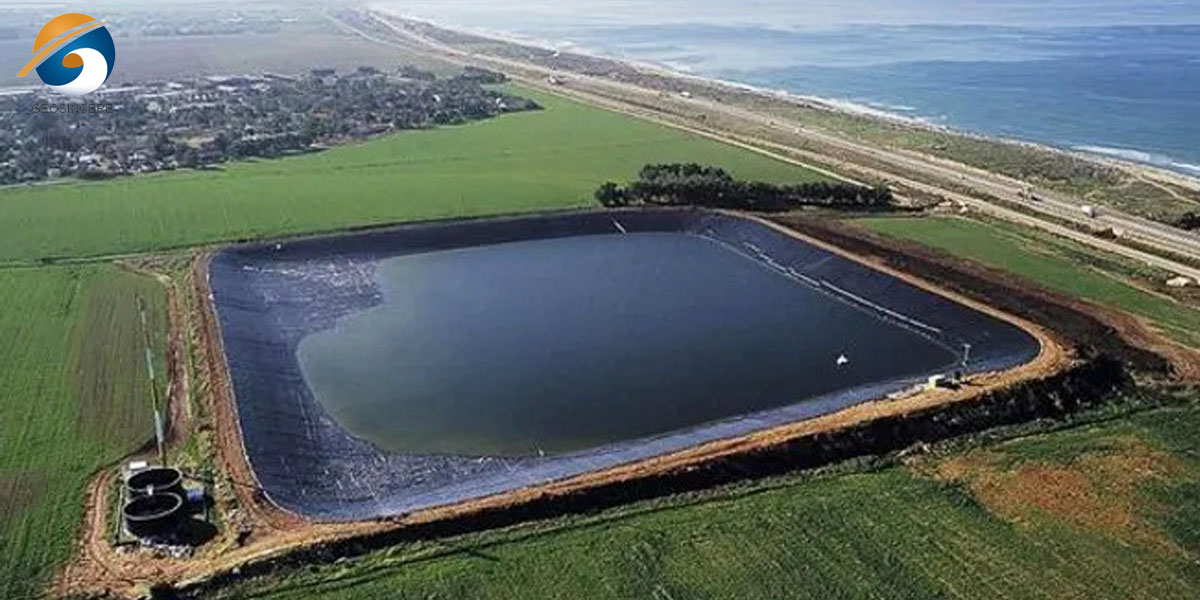What is Geomembrane Liner Cost?
In present day civil engineering, mining, waste management, aquaculture, and environmental safety projects, geomembrane liners are the spine of waterproofing and anti-seepage systems. They stop fluid migration, shield soil and groundwater, and make certain structural stability. However, for mission managers, contractors, and procurement teams, one of the most frequent questions is: “What is geomembrane liner cost?”
The reply is no longer as easy as quoting a single number. The price of hdpe liner relies upon on a couple of factors, ranging from uncooked fabric nice to thickness, installation, logistics, and even long-term maintenance. Understanding these price elements helps decision-makers sketch their budgets wisely, evaluate suppliers effectively, and make certain assignment success.
As GEOSINCERE Geosynthetics, a expert dealer of geosynthetics, we purpose to furnish readability and transparency on this essential topic. This article will damage down the entirety you want to understand about geomembrane liner cost—from fee levels to influencing factors, project-specific considerations, and guidelines for decreasing basic costs barring compromising quality.
1. What is Geomembrane Liner and Their Applications?
HDPE pond liner is artificial membrane obstacles specifically used for fluid containment and anti-seepage applications. These engineered substances are manufactured from impermeable polymers that create an fantastic barrier in opposition to liquids, gases, and even some chemicals. Their crucial reason is to stop the migration of materials between unique zones, making them valuable in environmental protection, water conservation, and industrial containment applications.
One of the most necessary traits of hdpe geomembrane is their extraordinarily low permeability. Some sorts provide permeability coefficients as low as 1×10⁻¹⁷ cm/s. This fantastic impermeability comes from their dense molecular shape and non-porous nature, permitting them to keep long-term overall performance and structural integrity for decades.
Because of their versatility and reliability, geomembrane sheet is broadly adopted in:
Landfill containment – Used as fundamental and secondary limitations to stop leachate leakage into surrounding soil and groundwater.
Water containment initiatives – Including reservoirs, synthetic lakes, irrigation canals, and dams, supporting preserve water with the aid of stopping seepage.
Aquaculture operations – Fish and shrimp farms use them to create managed environments, hold water quality, and simplify pond cleaning.
Mining and industrial makes use of – Tailings ponds, ash yards, and industrial containment areas rely on geomembranes to cease hazardous leakage.
Agriculture – For biogas digesters, manure storage, and irrigation ponds.
Specialized initiatives – Such as tunnels, transportation projects, and metro structures requiring waterproofing barriers.
2. The Definition of Geomembrane Liner Cost
When discussing “geomembrane liner cost,” it’s essential to reflect onconsideration on the full scope of charges that make a contribution to the typical investment. The whole value consists of quite a few key components:
2.1 Material Cost
This is the base charge of the geomembrane sheet, generally calculated per rectangular meter or per roll. The price varies relying on polymer kind (HDPE, LLDPE, PVC, EVA), thickness, floor texture (smooth or textured), and high-quality certification.
2.2 Installation Cost
Includes labor, welding and extrusion equipment, seaming, and satisfactory testing. Professional set up ensures appropriate sealing, leak prevention, and compliance with global engineering standards.
2.3 Transportation Cost
Covers delivery and coping with from the manufacturing facility to the assignment site. For large-scale projects, transportation optimization can drastically minimize typical expenses.
2.4 Ancillary Cost
Refers to helping substances such as welding rods, protecting geotextiles, drainage layers, anchor trenches, and on-site supervision or inspection services.
2.5 Lifecycle Cost
Beyond preliminary installation, this includes long-term performance, maintenance, repair, and practicable alternative over the liner’s carrier life. High-quality hdpe liner pond can also have a greater upfront price however end result in decrease whole lifecycle fees due to sturdiness and decreased preservation needs.
In summary, high density polyethylene liner value is no longer constrained to the buy price. It represents the whole expenditure from production, delivery, and set up to long-term carrier and maintenance, which determines the actual price of your investment.
3. Typical Price Range of Geomembrane Liner Cost
While expenditures fluctuate relying on material grade, manufacturing scale, and regional factors, the following desk affords prevalent reference levels based totally on global market conditions:
- 0.5mm smooth HDPE geomembrane: round USD 0.7 – 1.2 per m²
- 1.0mm smooth HDPE geomembrane: round USD 1.5 – 2.2 per m²
- 1.5mm smooth HDPE geomembrane: round USD 2.5 – 3.5 per m²
- 2.0mm smooth HDPE geomembrane: round USD 3.8 – 4.8 per m²
- Textured HDPE geomembrane (for slopes): normally 15%–25% greater than easy type
- LLDPE geomembrane: commonly barely more cost-effective than HDPE due to its softer shape and flexibility
- PVC or EVA geomembrane: fee relies upon on thickness, plasticizer content, and additives, normally greater due to best flexibility and ease of installation
These figures are indicative and can also fluctuate in accordance to dealer capacity, uncooked cloth fluctuations, logistics costs, and venture complexity. Partnering with a dependable producer like GEOSINCERE Geosynthetics ensures steady quality, aggressive pricing, and technical assist tailor-made to your unique engineering requirements.
4. Key Factors Affecting Geomembrane Liner Cost
4.1 Raw Material Quality
Virgin HDPE resin prices extra however ensures sturdiness of 20–30 years.
Recycled resin is more cost-effective however lifespan and overall performance are reduced.
Project proprietors of essential works (e.g., landfills, mining) nearly continually require virgin resin to meet ASTM or GRI standards.
4.2 Thickness & Specification
Thicker geomembrane pond liner furnish higher mechanical energy and anti-seepage however additionally fee substantially more.
Standard range: 0.5mm to 3.0mm.
Special initiatives can also require strengthened or composite geomembranes, in addition growing cost.
4.3 Surface Type
Smooth liners are more cost-effective and less complicated to produce.
Textured liners (single or double-sided roughness) furnish better friction on slopes however fee more.
4.4 Manufacturing Standards & Certification
HDPE geomembrane liner conforming to ASTM, GRI GM13, ISO requirements fee extra however assurance constant performance.
Certified merchandise minimize mission dangers and long-term expenses.
4.5 Production & Supply Scale
Large producers like GEOSINO advantage from economies of scale, providing decrease unit costs.
Small factories can also provide more cost effective expenditures however regularly compromise on consistency.
4.6 Transportation & Logistics
Shipping fee relies upon on destination.
For worldwide projects, freight can account for 10%–30% of complete liner cost.
Smart packing (e.g., large rolls, optimized loading) reduces per-unit logistics expense.
4.7 Installation & Welding
Welding generally prices 30%–50% of cloth cost.
Professional welding machines and skilled crews are crucial for seam energy and quality.
Poor set up leads to leaks and pricey repairs—so “cheap installation” regularly potential greater long-term cost.
5. Geomembrane Liner Cost per Project Type
The cost of geomembrane liners varies significantly depending on the engineering application, liner type, thickness, installation complexity, and site conditions. Understanding these factors helps project planners and engineers anticipate budget requirements and select the most suitable materials.
5.1 Geomembrane Liner Cost for Landfill Lining Structures
Landfills require some of the most robust geomembrane solutions. Typically, thick high density polyethylene geomembrane ranging from 1.5 to 2.0 mm are used, often combined with double lining systems and protective geotextiles. This ensures resistance against chemical leachate, mechanical damage, and long-term degradation. Additionally, landfills demand strict quality assurance and quality control (QA/QC) procedures, including welding inspections, spark tests, and continuity testing. Due to these stringent requirements, landfill projects have the highest liner costs per square meter compared to other applications.
5.2 Geomembrane Liner Cost for Mining Heap Leaching
In mining operations, particularly heap leaching for metals extraction, HDPE liners of 1.5–2.0 mm thickness are common. These liners are often textured or embossed to prevent sliding on inclined surfaces, ensuring stable containment of acidic or alkaline leachates. While not as expensive as landfill systems, the combination of slope stabilization requirements, chemical resistance, and site preparation contributes to a medium-to-high project cost.
5.3 Geomembrane Liner Cost for Aquaculture Ponds
Aquaculture projects, such as fish or shrimp farms, generally use 0.5–1.0 mm HDPE or PVC liners. While thinner and less costly per square meter, aquaculture ponds can cover large surface areas, which amplifies the total investment. Factors like UV exposure, water quality management, and the need for smooth surfaces to prevent biofilm accumulation influence material choice and installation practices.
5.4 Geomembrane Liner Cost for Agricultural Irrigation Ponds
Irrigation ponds and farm reservoirs share similarities with aquaculture projects in liner thickness (0.5–1.0 mm) and cost sensitivity. Farmers often prioritize economic efficiency, balancing durability with affordability. Installation is typically straightforward, but large-scale water retention demands careful site grading and preparation to minimize leakage and liner stress.
5.5 Geomembrane Liner Cost for Water Reservoirs
For municipal or industrial water reservoirs, geomembrane thickness ranges from 1.0 to 1.5 mm, frequently paired with a protective geotextile layer to prevent punctures and enhance longevity. Costs are moderate, reflecting the balance between required durability, chemical stability, and water containment reliability. Installation may involve specialized anchoring and seam welding, especially for reservoirs with irregular shapes or high water depth.
5.6 Geomembrane Liner Cost for Tunnels & Infrastructure
Tunnels, underground structures, and other infrastructure projects often require flexible hdpe geo membrane such as PVC, EVA, or reinforced composites. While the thickness may be lower than HDPE landfill liners, the per-unit cost is higher due to the specialized materials, custom fabrication, and skilled installation needed to fit complex geometries. These membranes must withstand mechanical stress, hydrostatic pressure, and potential chemical exposure, making them more expensive despite smaller surface areas.
6. How to Reduce Geomembrane Liner Cost Without Sacrificing Quality?
At GEOSINCERE Geosynthetics, we regularly information our purchasers with these strategies:
Choose the proper hdpe liner sheet thickness – Do no longer overspecify (e.g., the usage of 2.0mm in aquaculture the place 0.75mm is enough).
Buy from direct producers – Skip merchants to keep away from greater margins.
Optimize roll dimensions – Larger rolls minimize seam numbers and welding labor.
Plan logistics early – Combine orders, pick out the most environment friendly transport method.
Ensure expert set up – Prevent high-priced leakage repairs later.
Balance upfront vs. lifecycle price – Paying barely greater for virgin resin saves on alternative and liability.
7. Case Study: Comparing Geomembrane Liner Cost
Imagine two contractors bidding for an aquaculture pond liner venture (100,000 m²):
Contractor A: Buys 0.75mm HDPE geomembrane at $1.1/m², with expert welding.
Total cost: $110,000 substances + $40,000 set up = $150,000
Lifespan: 15–20 years
Contractor B: Buys 0.75mm recycled liner at $0.8/m², with less expensive welding.
Total cost: $80,000 substances + $20,000 set up = $100,000
Lifespan: 3–5 years, ordinary leaks, excessive restore costs
Result: Contractor B looks more cost effective upfront, however inside 5 years, restore + alternative exceeds Contractor A’s cost. This demonstrates why proper value ≠ buy price.
Conclusion
So, What is Geomembrane Liner Cost?
It is now not simply the charge per rectangular meter—it is the sum of material, logistics, installation, and lifecycle expenses.
Understanding the value shape lets in challenge managers and contractors to make clever choices:
Select the proper kind and thickness.
Partner with licensed suppliers.
Balance upfront funding with long-term reliability.
At Shandong Geosino New Material Co., Ltd. (GEOSINCERE Geosynthetics), we agree with that “the most within your budget liner is the one that lasts.” By selecting incredible geomembranes, dependable installation, and expert support, your challenge achieves each financial effectivity and environmental safety.
If you are evaluating geomembrane liner fee for your project, contact us today. Our group will furnish a distinctive quotation, technical advice, and tailor-made options to meet your price range and overall performance needs.








